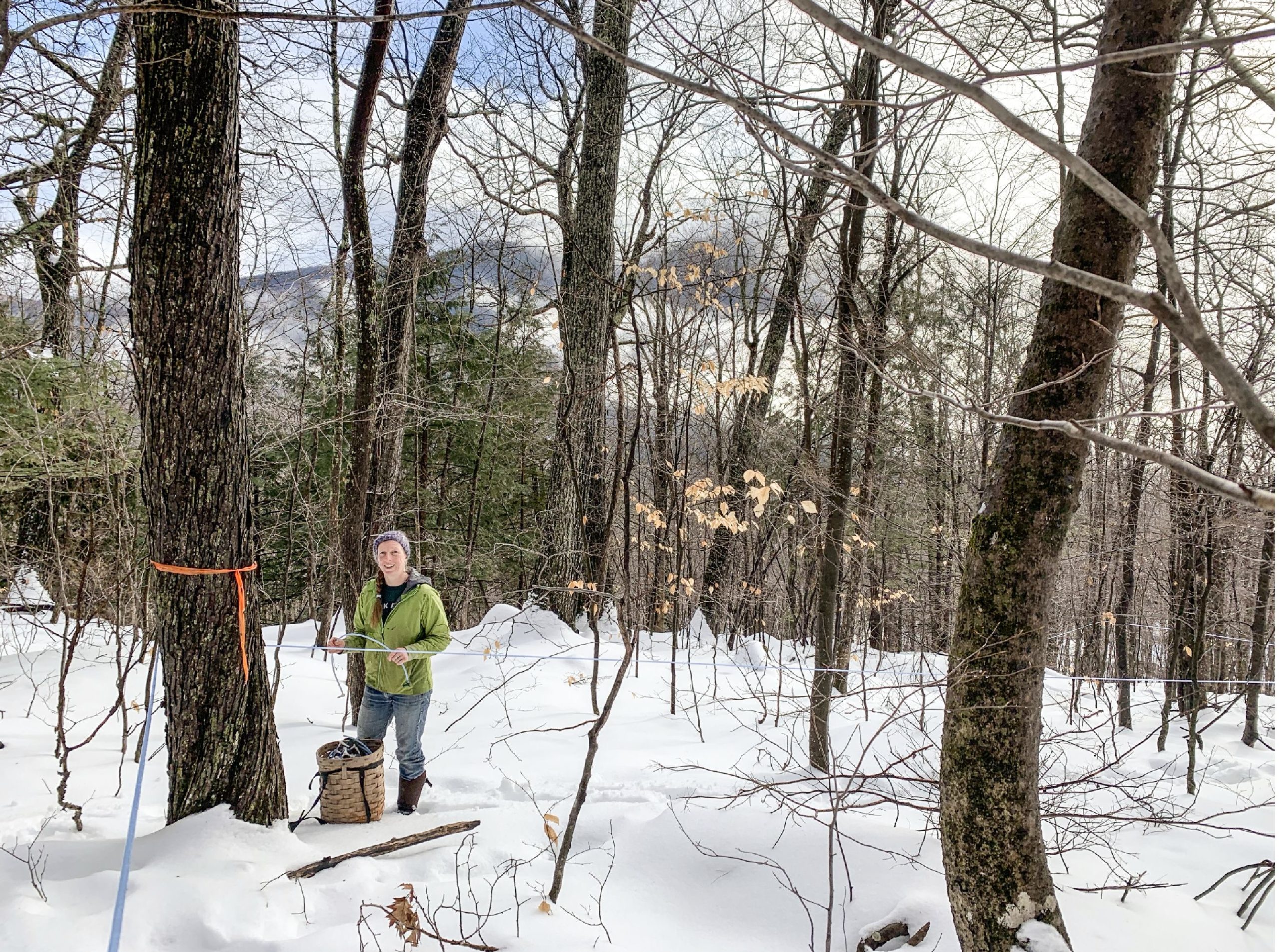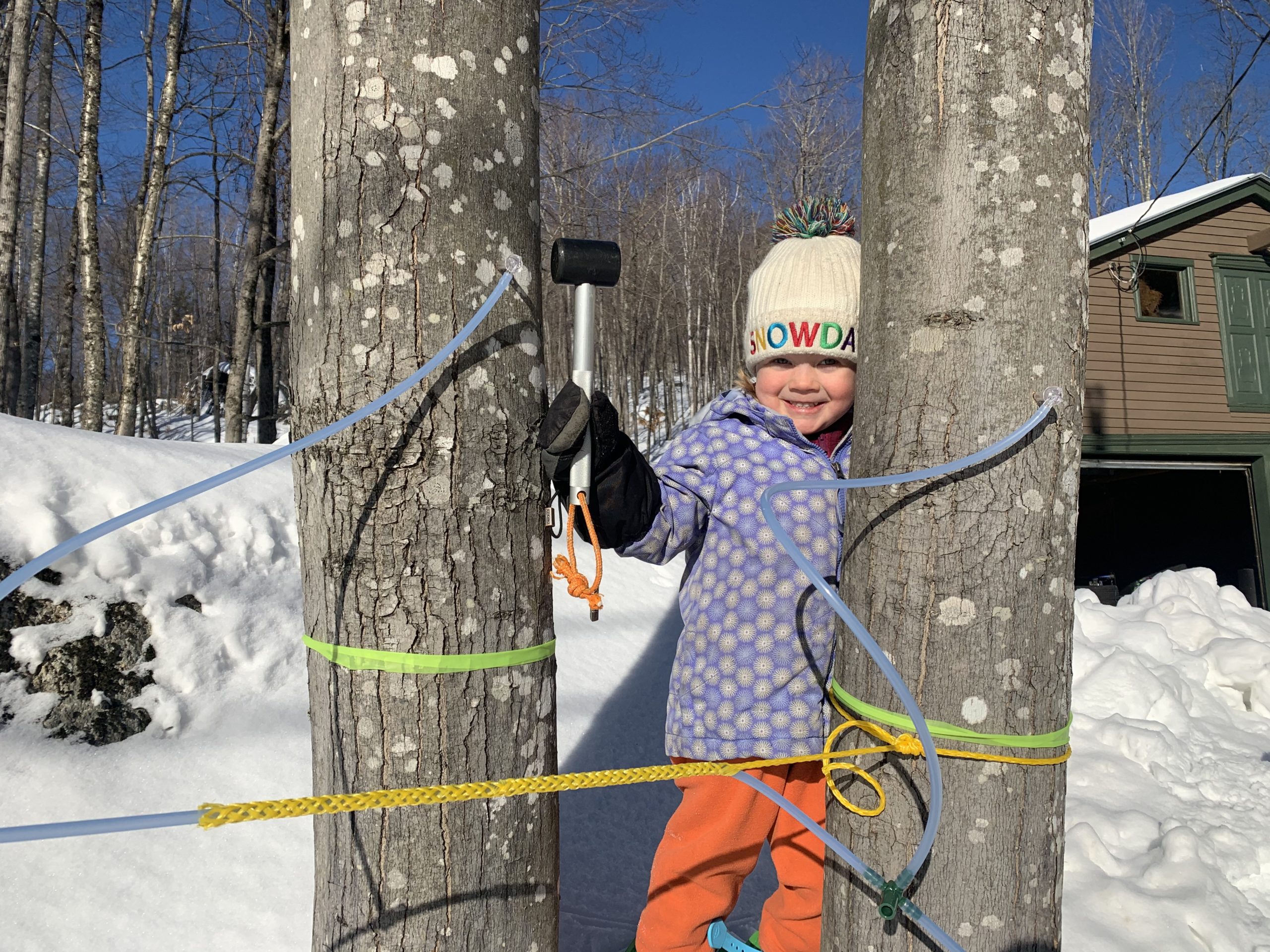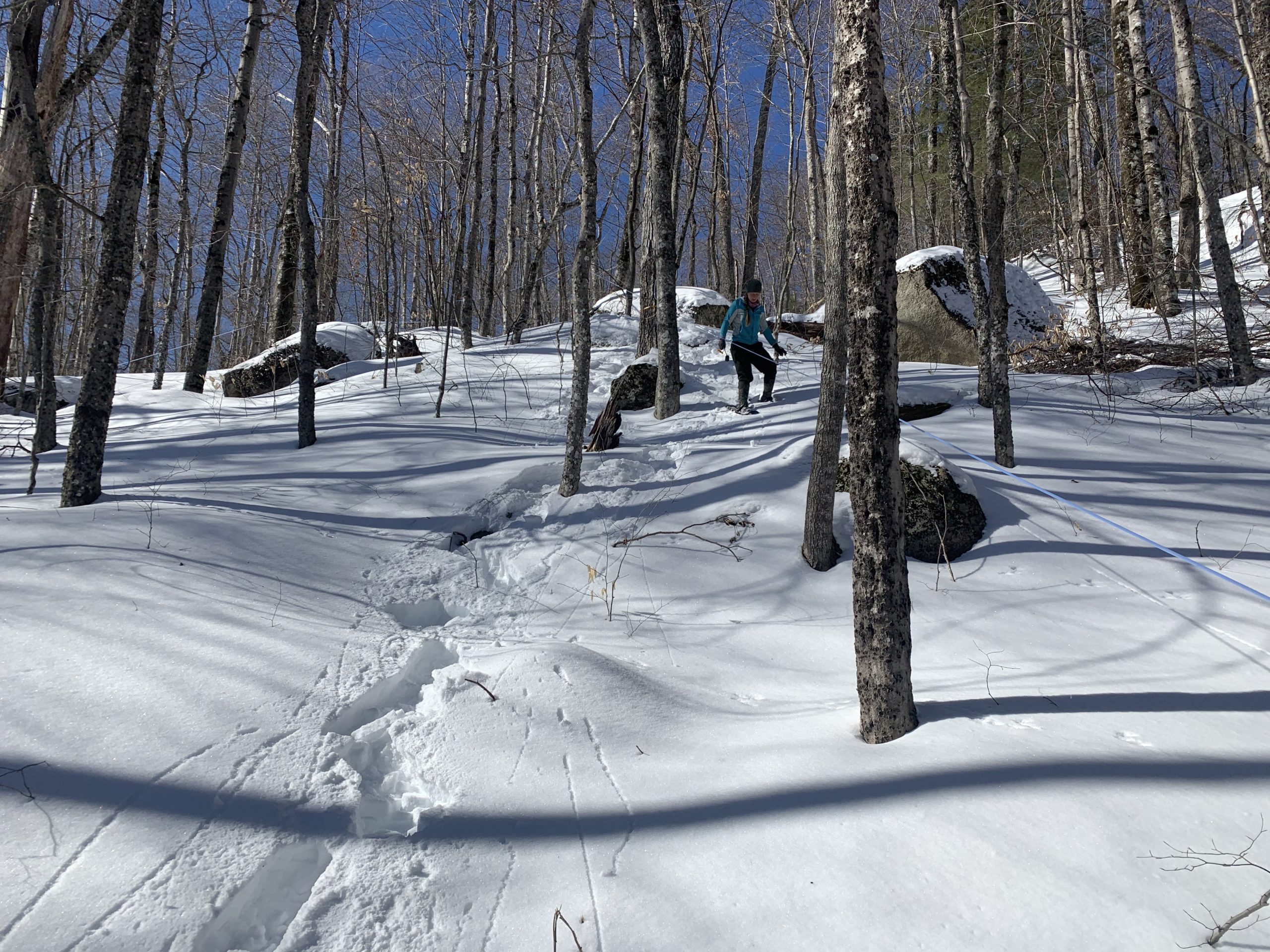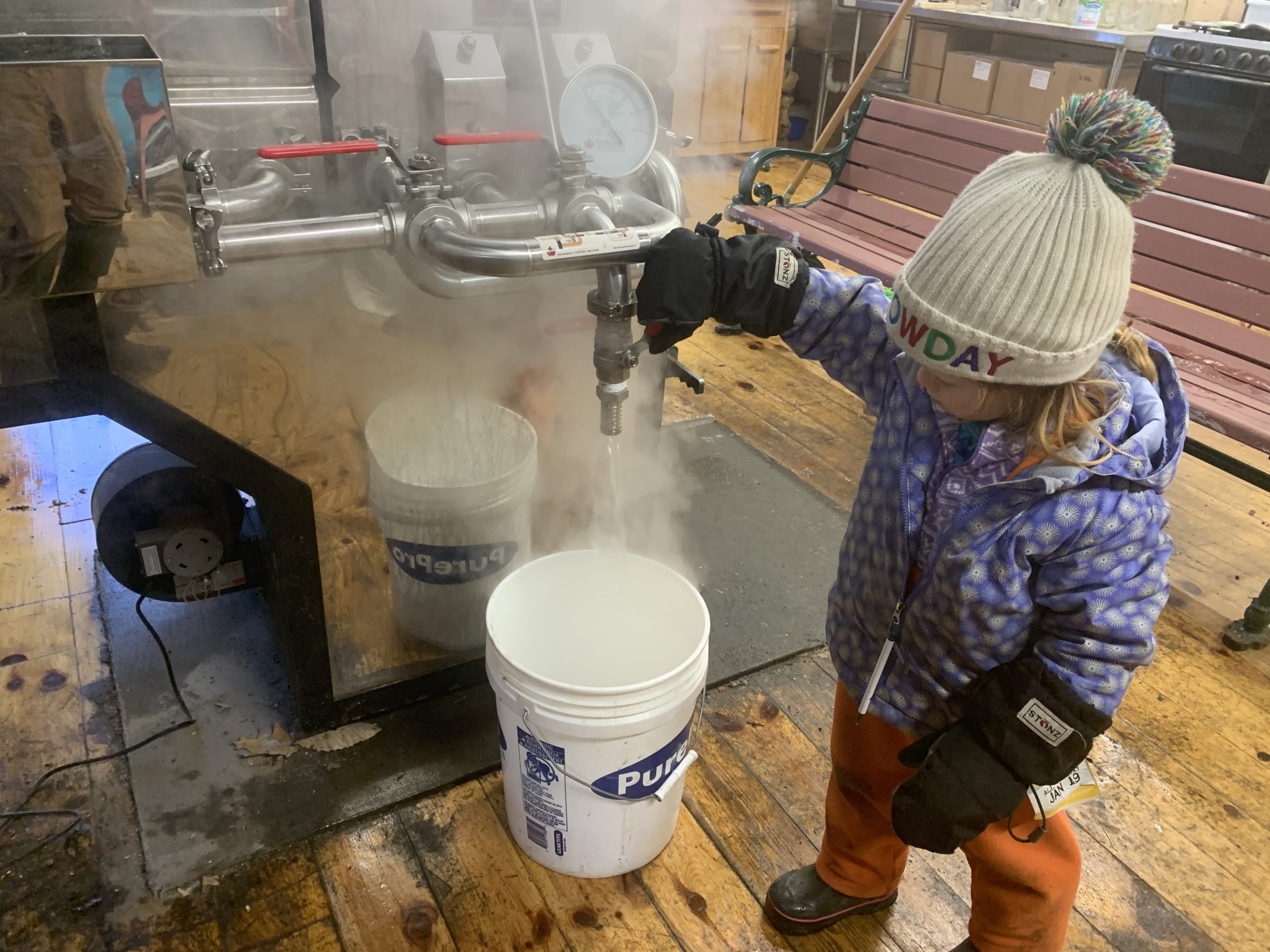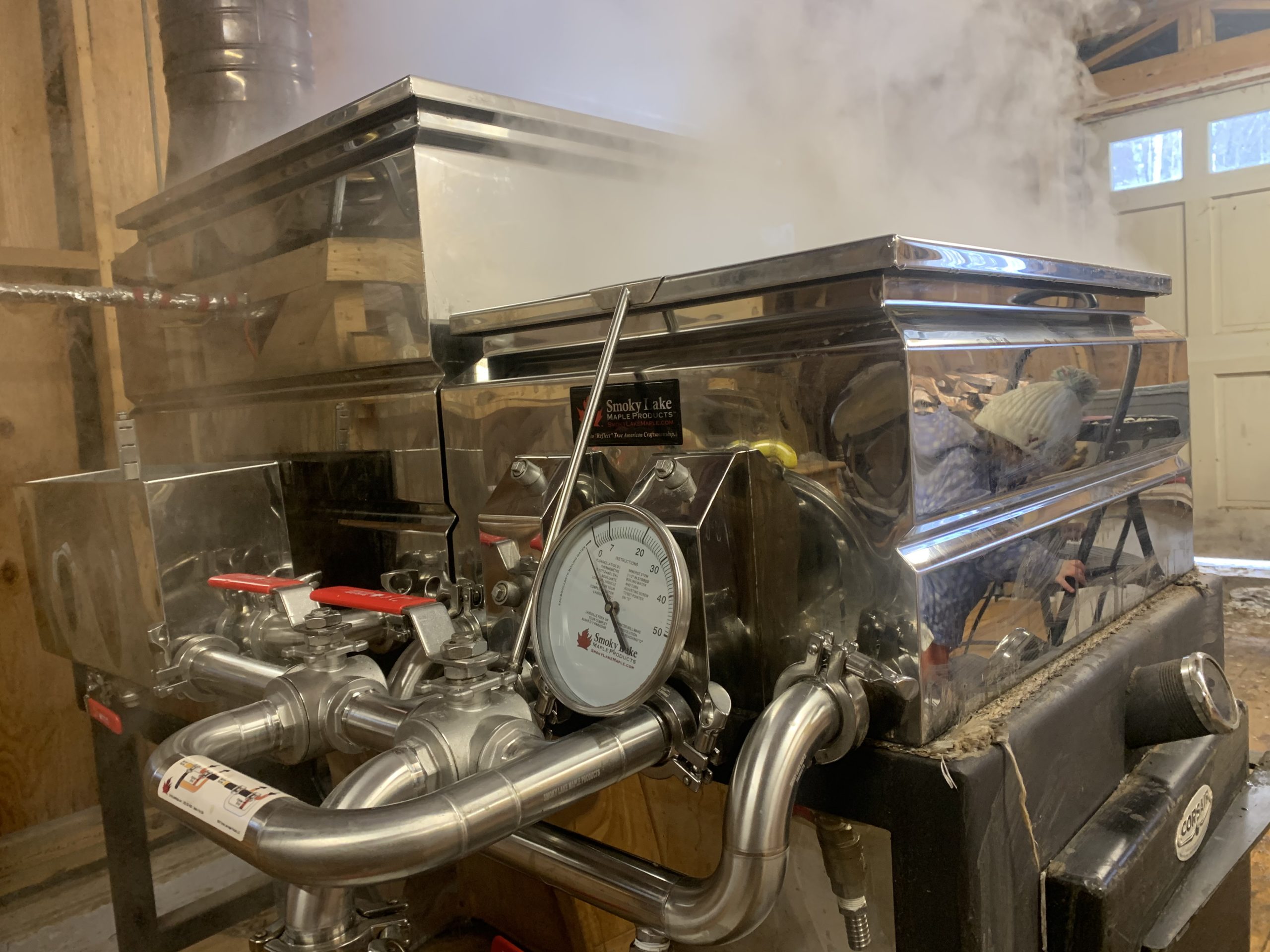To view our 2021 Maple Syrup prices click here. Send us an e-mail for ordering information. Stay tuned for additional Maple Products.
The recent dusting of snow has been a blank canvas for tracking the movement of small animals. Each step of a gray squirrel as it sprints to the next tree leaves a mark with little foot pads and claws. And while doing chores Sunday morning I was able to track a more rare small mammal that arrives as the weather begins to warm – an Ellie Bellied Sap Drinker. Sunday I found the animals small footprints circling a cluster of young maples, a sure sign that sap will be flowing soon.
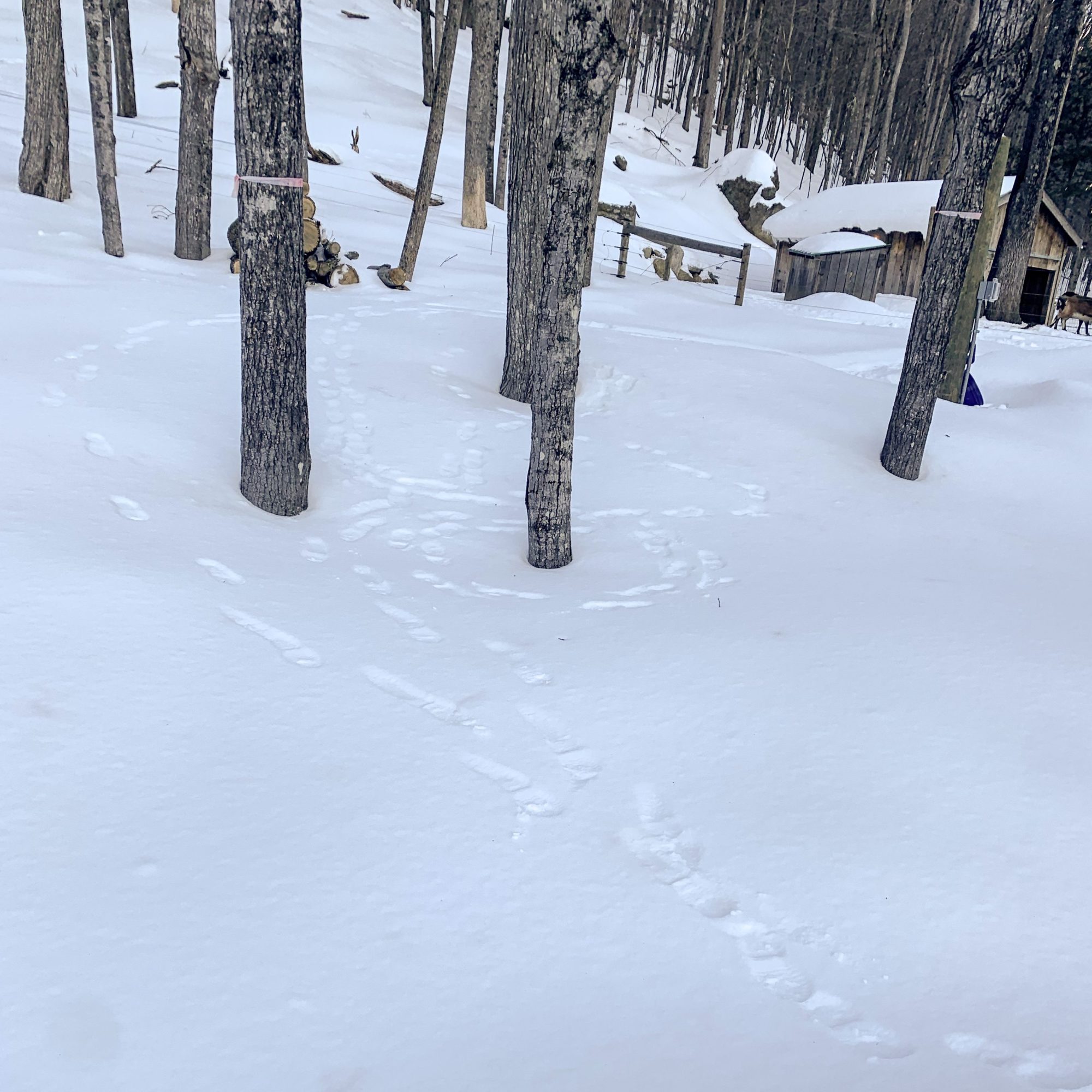
The run up to the 2020 sugaring season was hectic. We were just putting the finishing touches on our sugar house as the woods began to thaw. This year our lines were in place and ready to tap in January, about the same time we were ordering our evaporator a year earlier. With a few 40 degree days forecast for this week, this weekend was “Go-Time” for the Dundee Ridge Farm 2021 sugaring season. On Friday we cleaned the bottler. We spent Saturday scrubbing the evaporator, having a test boil with water and organizing the sugar house. Sunday we trudged into the woods to tap the trees. Ellie and I drilled our first hole at 8:30am, and Liz, Brian, George and I finished up the runs on the hill just before lunch. Our tap count stands at 152 on 3/16” lines, and we’ll add another 25 on buckets once the sap really starts to flow.
Our sugaring operation is tiny compared to many of the regions producers, but we take pride in our smaller scale. Many of the big operations are running gas powered vacuum pumps, whereas we rely on skinny tubing and a mountainside to produce our suction. Larger operations tend to run oil-fired evaporators as opposed to wood, which just seems sac religious to me. And plenty of sugar markers will increase the density of their sap using reverse osmosis before it even hits an evaporator pan, which is more energy efficient, but also not the same as cooking it down the entire way with heat. To put it simply, I’d rather make syrup sitting around a simple wood fired evaporator, then a series of pumps and reverse osmosis filters and an oil fired beast, and I’d rather visit and get syrup from an operation using the traditional techniques as well.
This years minimal snow, locked in by a thick crust, made travel in our sugarbush like walking on a steeply inclined pond that broke under foot (even with snowshoes) on two of every three steps. The vertical nature of our woods provides plenty of gravity for sap, but gravity doesn’t discriminate. Progress was loud as the crust crunched under our snowshoes, and awkward as each stumble threatened to send us tumbling.
A trip to the top of our sugarbush requires a climb of roughly 250 vertical feet of climbing. Our trail doesn’t do any switchbacks or have any other hiker friendly features to make it easier. It’s a leg burner. Our chosen technique is to hike to the top of a run— a 1000’ish foot length of tubing with 15 to 25 taps along it. From the top of a run, we hike our way down, drilling holes in each maple, placing the tap, and tapping it in gently. Following the line as it zigzags through the woods, we tap each maple and move on. Once a run is tapped and we reach the bottom we head back to the top to tap the next run.
There’s elements to sugaring that are a leisurely activity for me. Like fly fishing, mushroom foraging, or shed hunting its an excuse to be in the woods. Even when relaxing, I have a need to feel like I am still “doing.” Being in the woods, examining the trees and preparing the harvest their sweet rewards is my equivalent of a Sunday afternoon on the couch. And its a good way to get some exercise to prepare for sitting around the evaporator and watching sap boil for the month.
